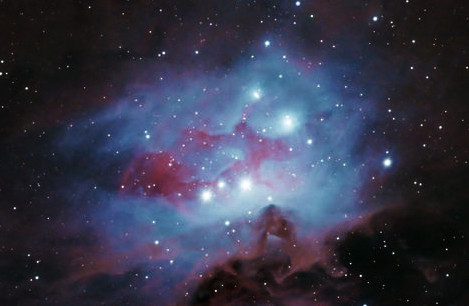IC 1396
Constellation: Cepheus
IC 1396 is a large region of interstellar gaz in the constellation of Cepheus. It is about 2’400 Ly away from Earth. IC1396 contains the Elephant’s Trunk nebula (IC 1396A), the bright shape to the west of the image. The bright rim of the nebula is the surface of a dense cloud that is illuminated and ionized by a very bright and massive star (HD 206267) located east of IC 1396A. It is part of a wide region of interesting objects in the southern region of Cepehus. Link to interactive sky chart.
The brightest star (38,000 times brighter than the Sun), to the north, is μ(mu)-Cephei, the Garnet star. It is a red supergiant with a diameter larger than the orbit of Saturn (approx. 2536 times the diameter of the Sun).
Dates:
This image was taken in May and June 2021
Telescope & Mount:
Celestron 9.25″ EdgeHD with Hyperstar 4.0 on a Celestron CGX-L mount. Guiding with tecnosky 70/400 and ASI290MM Mini
Imaging:
Camera: ASI2600MC-Pro (bin 1×1)
Data:
6 panes, each consisting of: 80x30s
Total integration time: 4h
This image was taken with:
OTA: Takahashi FSQ-106ED
Mount: Paramount MX+
Narrow-band data consisting of two panes totaling:
– Hα: 53x300s
– O-III: 60x300s
– S-II: 72x300s
Total integration time: 15h 25′
The data was interpreted using the Hubble Palette.
Taking an even closer look at the nebula.
The Elephant’s Trunk Nebula is now thought to be a site of star formation, containing several very young stars. Two of these young stars are located in a small, circular cavity in the head of the nebula. Winds from these young stars may have emptied the cavity.





